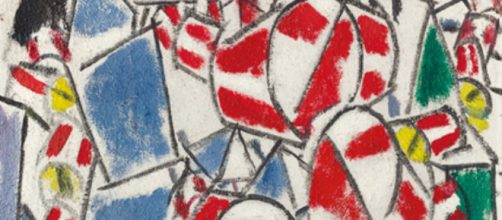An Art News magazine report on Nov.14 told the story of a Christie’s auction that sold off all but eight of 68 Impressionist and Modern paintings and at record prices. It was a money story from start to finish, like some stodgy account in a business journal. There was no mention of the works beside picture title and sale price.
Seeing art as currency
Granted art-pricing is geared to what the market will bear. The intrinsic worth of a work has little to do with market value. Even so, you’d expect a magazine devoted to painting and sculpture since 1902 to say something about the work – a description, if not a discussion.
If America’s oldest and reportedly best read publication doesn’t say anything, what other will? When did art-speak become shop talk about money? My guess is that it began when Andy Warhol replicated paper money with his “200 Dollar Bills” and rang up a whopping auction sale of $43.8 million.
Painting as biography
All the heavy hitters like Warhol were on the auction block - Van Gogh, Monet, Picasso – painters whose work consistently gets attention. Equal time should go to others in the Christie’s sale. I’m thinking of the Cubist Fernand Leger. Particularly notable about him is how much his work ties to his life experiences. Consider, for example, his preference for simplified form and strong structure.
That way of looking at the world likely came from his early struggle to earn a living by working as an architectural draftsman.
A traceable link
Another probable link between Leger’s picture-making and his personal life came about in his student days. He attended the School of Decorative Arts and you can see the aftereffect in the painting that sold at Christie’s called “Contraste de forms” - a recurring wallpaper-like pattern of cubes, cones and cylinders. He also sat in on classes at the very traditional Eco le des Beaux Arts and shared his opinion of that school with gallery owner Daniel–Henry Kahnweiler, which introduces the next connection between his picture-making style and his history.
Kahnweiler quoted him in his book “My Galleries and Painters” saying that the time he spent at Beaux Arts was “empty and useless,” Hold that thought.
“The new reality”
In his later work, Leger’s work changed. Even though he had a predilection for abstraction, he began to include recognizable forms, which I contend can be attributed to the taste of his wife Nadia. Picasso’s mistress Francois Gilot provided the clue to his reason for the style switch in her book “Life with Picasso” when she talked about Nadia, who she saw as “unsophisticated as could be.” She came to that conclusion during a visit from the couple. When Picasso brought out a few paintings for them to look at, Nadia theorized on what she saw as “the new reality” – abstract versus figurative art - saying, “Painting must return to some kind of realism. It’s absolutely necessary.” Need I say more?


